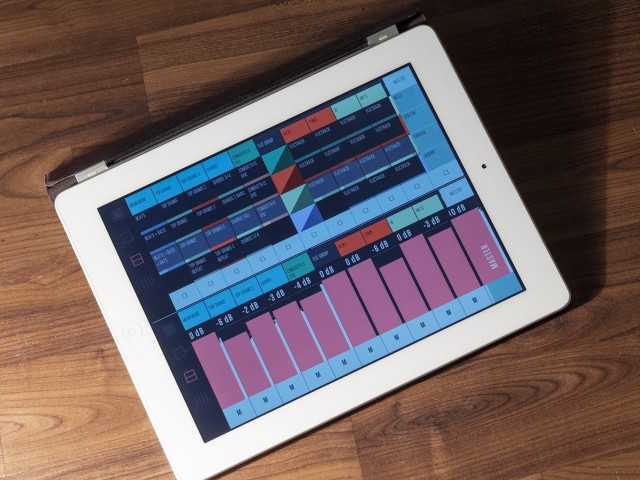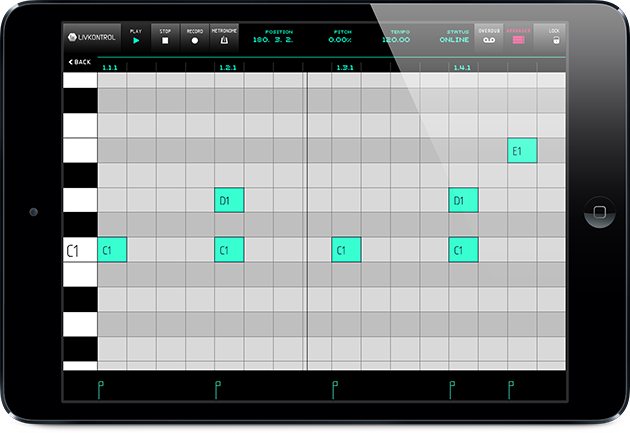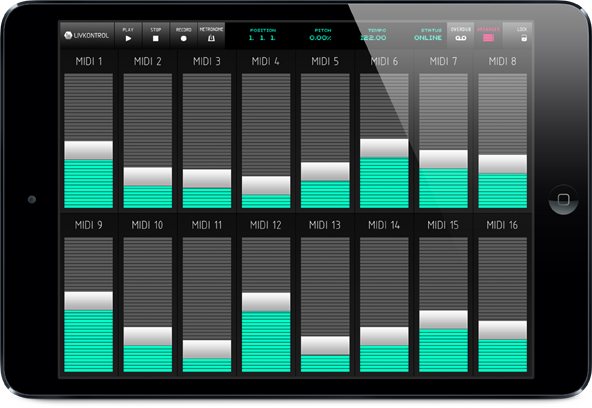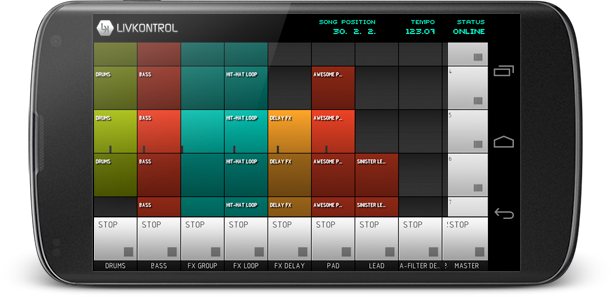
Conductr is a newcomer on the scene from Barcelona. Still in development, a release is expected this summer. It already sports an aesthetically-pleasing design and clever gestural modes that make it easier to quickly get access to parameters you need. But it faces a tight field of entrants.
The “live” in Ableton Live suggests making musical decisions in real time – not slowly with painstaking editing, stopping and editing and drawing, but as you listen and work. But while the onscreen interface is built around the mouse, and the precision of the mouse, focusing on those settings in performance, DJing, or studio work really wants something else. So, you have two choices. One is to use external physical control, like a conventional MIDI controller or the just-released Ableton Push. And that works very well for many people.
Or, you can use a touchscreen. The advantages of the screen approach: you can easily see clip names (either impossible on external hardware or limited to a slim display), and you can more flexibly navigate lots of different parameters.
There’s an extraordinary range of apps vying to be your Live remote control of choice, and the competition just keeps getting tighter. Last month, we saw a major new release out of the collaboration of two originators of the field:
Touch Ableton Live: LiveControl 2 Brings Finger Controls to iPad; Griid Discontinued
That software brings Lemur-style custom controllers, pattern editing, and more to the table. It’s the work of Liine and ST8. I left out ST8’s site in our previous story; check it out – it was a terrific collaboration with someone from the Live community that resulted in the app:
But there’s more. In Barcelona, Conductr made its first public debut, offering its own take on usability and with some interesting ideas about how to make controllers more accessible and playable. Long-time favorite touchAble, popular for its extensive controls for Live, is working on a feature that will allow you to edit your own controls. And LivKontrol, early out of the gate with pattern editing, is now the first major controller to be specifically designed for Android-using Ableton Live musicians.
LivKontrol for Android is available now; the other two are nearing release. Let’s have a look at what they offer.
Conductr

Custom group configuration is one of the selling points behind Conductr, letting you grab parameters from anywhere in a set and focus exclusively on those.

Being able to focus on just a few parameters, each covering a lot of screen area, could make Conductr a solution for live performance where others have failed. (Ever struggled to tap the right control on a cluttered screen?)

Special gestures mean you can select one parameter without even looking at the screen – two fingers give you the second fader, for instance.
Conductr is an upstart would-be rival to existing Live controllers on the app markets. Developed in Barcelona, Conductr does a lot of the things the others do – it has minimal, geometric colored graphics, focuses on the Session View portions of Live, and uses a semi-modular layout to divide sections of the screen into layouts (like, notably, touchAble has). But as I got to try it in a hands-on session at SONAR, a number of unique features came out.
I remember seeing The Glitch Mob with their Lemur controllers onstage. One thing this band did – juggling percussion and other instruments – was to reduce their Lemur layouts to just a few controls on screen. They opted for oversized buttons and faders in place of lots of delicate, fiddly controls. Here was this advanced hardware, doing as little as possible.
But there’s some sense to that. If you are playing another instrument, if you are working feverishly onstage, you don’t want the kitchen sink controls you might use in the studio. You want to be able to make a big gesture and know it’ll work.
That’s where Conductr excels. It can easily “grab” parameters from across a session, using intuitive editing functions or a “learn” feature. Then, using its modular layout, you can put just a handful of controls on your iPad – even just three giant faders, if you so choose. Going one step further, if you still think you might hit the wrong fader, you can use multi-finger gestures to swipe onto a specific parameter. (The mode is optional, but could be worth trying.)

Fingers-on test of Conductr. Multi-finger gestures give you control over specific faders in an optional mode – and it works well enough that it’s one of the only times you can use an iPad without looking at it.
This feature alone I think could make Conductr worth loading onto an iPad. But in other regards, the Conductr team will have some catching up to do with a crowded field. The modular features are nice; it’ll be interesting to watch as they refine these and the look and feel over coming weeks. The developers talked about being interested in adjusting things like how faders respond in touch behavior. (I’d love something that smooths over settings or at least adds a friction/physics option; too many touch controllers are far too sensitive, resulting in herky-jerky fades.)
They also say they envision Conductr as a platform; in-app purchases will unlock other, purpose-specific modules. That seems reasonable; apps often languish in the long run economically without a reason for developers to continue investing. If Conductr can offer enough functionality out of the box, doing specialized modules could help the app grow – and grow in usefulness – with time.
If you sign up for their newsletter now, you have a chance for a free license:
touchAble
touchAble won converts early on for providing access to more extensive parts of Live first. The next chapter for the app, a long-awaited v2 landmark release, takes the next logical step, allowing editable controls. As they posted recently to their Facebook page:
We’ve promised some information about our upcoming v2 of touchAble – so here we go!
We happily present you the new Edit Module:The Edit Module will allow you to create your own interfaces using XYPads, Sliders and Buttons. Select any parameter of the current Live Set or choose any MIDI CC or Note for your Control, label & color it as you wish – and use it in combination with any other module as a half or fullscreen view.
Your interfaces can consist of as many pages as you wish – and can easily be saved, loaded or created!
Sorry it is taking so long guys – but we promise the update will pay you all back for your waiting time!
LivKontrol
LivKontrol is perhaps a lesser-known option in this market, but its unique design approach makes it worth a look. Whereas other apps tend to be inflexible when switching screen sizes or orientation, LivKontrol lets you set up universal layouts you can use anywhere.
Controls are more minimal, but that’s a selling point, I think; the layout is atypically clean and friendly.
LivKontrol also debuted the ability to edit patterns directly, with a view that looks quite like the one you see onscreen in Ableton.
And now, it’s done something no other app has: there’s an Android version (see photo, below). If you’re an Android user or even if you have a mix of gadgets, that could be the only selling point you need.
This is, naturally, not an exhaustive list of the tools you can use to control Ableton. We’d love to hear your current favorite – and what you feel is missing. (My vote for what’s lacking: almost nothing can help you in Arrange View, though that is partly to do with the way Ableton has set up arrangement workflows and UI assignments.)
In fact, the one conspicuous absence remains Ableton themselves. But with so many different tools, it’s easy to expect the third-party market will continue to serve their users in some capacity.
So, faderboxes, apps, what do you use?




